How much capacity does your iPhone battery have left? This is definitely a source of concern for many Apple lovers. My iPhone has been in use for three years, and the iPhone battery life is now at 89 percent. At this stage, I’ve been apathetic for a long time.
However, a sizable proportion of Apple consumers remain apprehensive. The deterioration in battery health implies that power consumption will increase, and the phone’s battery life will be drastically reduced.
As a result, many users have inquired as to how they might delay the aging of their batteries. Although a battery’s capacity must diminish as it ages, we may take steps to ensure that it lasts longer.
Isn’t It Possible To Merely Replace The iPhone Battery?
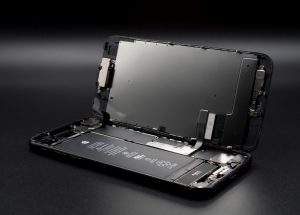
For the time being, let’s ignore the influence of replacing the battery on the iPhone’s airtightness. It is deemed dismantled even if the approved original battery is replaced. Not to mention the possibility of not receiving original batteries, which would be more harmful than beneficial.
So, after giving it some thought, it’s probably advisable to try to slow down the deterioration of battery health as much as possible. We can’t prevent the battery’s health from deteriorating during usage due to the properties of lithium batteries.
However, we may make the most of healthy charging practices. The following suggestions can help to slow down the deterioration of battery health.
1. Don’t Charge Your Phone Until it’s Turned Off
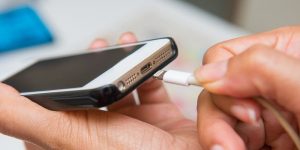
According to Apple’s official statement, “the chemical age of the battery” is the most important element impacting the iPhone’s battery life. To compute, a cycle is defined as a charge and discharge cycle that ranges from 0 to 100 percent.
Apple’s requirement is that after 500 charging cycles, the battery may retain up to 80% of its initial capacity. If the health of your iPhone battery falls below 80% within the warranty term, you can request a free battery replacement via Apple’s official after-sales service.
It’s important to point out that Apple’s criteria is highly cautious. Even if we use the battery for 500 cycles, the health of the battery will not decline to 80% as rapidly. In this scenario, we should strive to prevent charging and discharging to achieve a cycle if we want to prolong the deterioration of iPhone battery health.
This implies you shouldn’t wait until the battery is completely discharged before charging it. When we have charging circumstances, we usually need to recharge it at any moment. It’s preferable to keep the range between 25% and 75%, and at least 25% should be considered for pricing.
2. Select “Battery Optimization Charging” From The Drop-Down Menu.
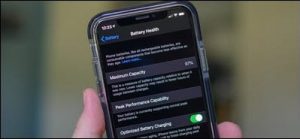
A phrase in Apple’s official literature states that quick charging is handy, while delayed charging ensures battery life. Only the 5w iPhone battery is retained at 100% in a handful of tests utilizing 5w, 18w, and 20w chargers to charge the identical new iPhone for two months.
As a result, regular quick charging makes it simpler to drain the battery. The existence of trickle charging is still important for lifespan, and this is also why the optimization charging feature should be activated.
On iPhones, the function of optimizing battery charge is turned on by default. You can opt to turn it off if you don’t care about battery life. The charging speed of the iPhone will improve once you switch it off, but the effect will be subtle.
This feature will learn your charging patterns intelligently. This time interval will be remembered if you charge your phone overnight. It will slow down the charging pace and extend the charging time after charging to 80%. This will significantly improve the battery’s health.
3. Prevent Charging While In Use And Avoid Charging In a Cot or Cold Area.
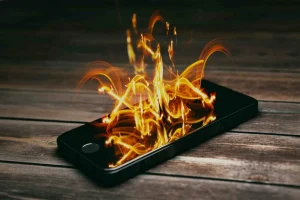
The lithium battery in electrical devices such as smartphones has a maximum working temperature of 040 °C. When the temperature drops below 0 °C, the lithium battery’s performance suffers.
The battery capacity will be lost if the temperature rises beyond 35 °C. In this regard, Apple advises that the greatest operating environment for Apple products is a temperature range of 16 to 22 degrees Celsius.
“When using the phone in a particularly chilly environment, the phone’s usage duration may reduce and the battery will drain fast, however this is only a temporary circumstance,” Apple added.
When the temperature of the battery recovers to its usual working range, its performance will be diminished as well…” That is to say, we should not leave the iPhone in a room with a temperature of more than 35 degrees. After the battery level hits 80%, the iPhone may turn off charging.
If you charge your phone in a high-temperature environment for an extended period of time, the battery will be irreparably damaged. Aside from external considerations, the heat generated by the phone itself has an impact on battery life.
Many people are accustomed to playing games while charging their iPhones, which can easily result in the iPhone overheating. As a result, we aim to avoid charging while playing games for the sake of battery health.
4. Only Use Apple Chargers.
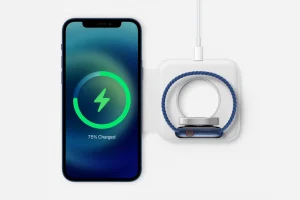
The majority of charging mishaps are caused by utilizing subpar third-party chargers. Third-party chargers are inferior because they lack the necessary safety features. As a result, there’s always the possibility of overshoot, overheating, or a short circuit.
Although Apple’s original charger isn’t the quickest, it is unquestionably the safest. Over-current, over-voltage, over-temperature, short-circuit, and flame-retardant protection are all built into the case. It also reduces the loss in battery health under the concept of maintaining safety.
However, people frequently complain about two issues with Apple’s original charger. The first is that it is costly, and the second is that it is not long-lasting. The original iPhone charger, on the other hand, is the safest for the iPhone.
Conclusion
These are some basic suggestions to assist iPhone users maintain the health of their devices’ batteries. It’s possible that replacing the battery isn’t the best option. You’ll have to pay money, and the replacement, especially if it’s from a third-party repairer, is unlikely to be faultless.
Join Our Telegram Channel For More Exciting Updates Via The Link Below ⤵️
